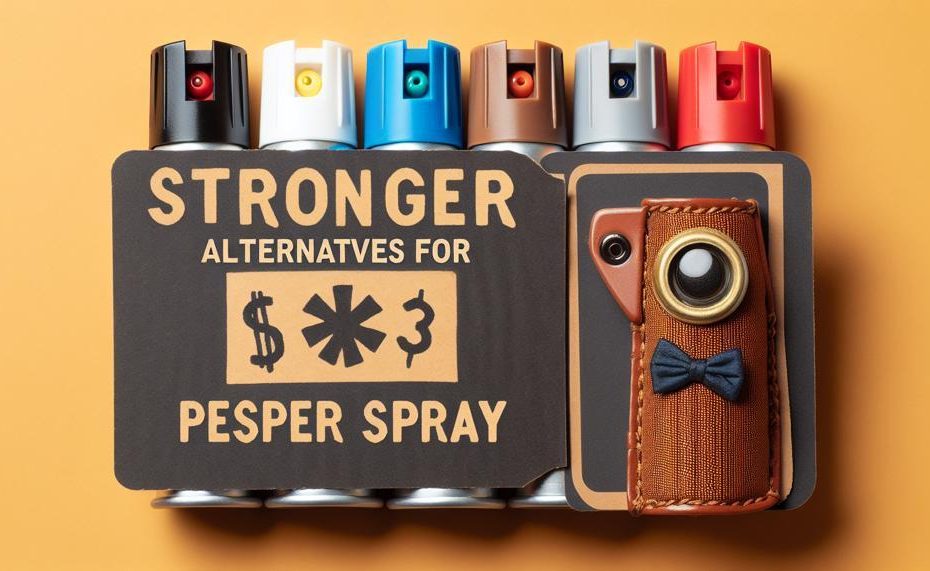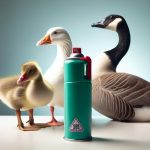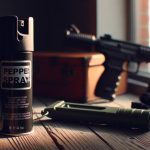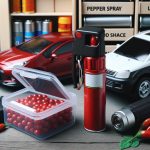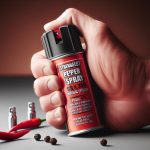When it comes to protecting ourselves, pepper spray is often the first thing that comes to mind. But what if you’re allergic to its ingredients or don’t feel comfortable carrying it? There are plenty of other options out there that can be just as effective in dangerous situations.
From everyday items found in your purse or pocket to specialized self-defense tools, let’s take a closer look at some alternatives to pepper spray:
- Stun guns: These handheld devices deliver a high-voltage shock that can temporarily disable an attacker.
- Personal alarms: With just a push of a button, these small devices emit a loud noise that can startle and deter potential attackers.
- Tactical pens: Don’t let their innocent appearance fool you – these writing utensils have sharp ends that can be used for self-defense.
- Keychain weapons: Small but mighty, keychain weapons like brass knuckles or kubotans can pack a powerful punch when needed.
- Flashlights: A bright flashlight can temporarily blind an attacker and give you time to escape.
But which one is the best option for you? In this blog post, we’ll dive deeper into each alternative and discuss their pros and cons.
Whether you’re looking for a non-lethal option or simply want more variety in your personal safety arsenal, keep reading for some great alternatives to pepper spray.
Contents
Is Bear Spray Stronger than Pepper Spray?
The significant contrast between bear spray and pepper spray is in their strength and intended purpose.
Bear spray is specifically designed to deter aggressive bears and contains a higher percentage of oleoresin capsicum (OC) than civilian pepper sprays, making it more potent.
Conversely, pepper spray is meant for self-defense against human attackers and usually has a lower OC content.
To provide a better understanding, here is a table comparing the key differences between bear spray and pepper spray:
| Category | Bear Spray | Pepper Spray |
| Potency | Higher concentration of OC (approximately 1-2%) | Lower concentration of OC (up to 1%) |
| EPA Regulation | Monitored by the Environmental Protection Agency (EPA) | Not regulated by the EPA (except for certain commercial brands) |
| Intended Use | Defense against large animals, specifically bears | Self-defense against human attackers |
| Legal Status | Considered a pesticide and legal everywhere | Legal in most states, may be regulated or restricted in some areas |
| Form | Aerosol form only | Liquid, foam, gel, and aerosol forms available for civilian use |
| Effect on Humans | Potentially hazardous if used on humans, can result in legal consequences and physical effects | Causes intense burning sensation, temporary blindness, and respiratory discomfort |
| Effectiveness | More effective against bears due to higher pressurization and larger quantity | Effective against human attackers, but may not be as potent as bear spray |
Overall, bear spray is more potent and effective against bears due to its high pressurization and larger quantity, while pepper spray is better suited for self-defense against human attackers.
It is crucial to understand the differences between the two and use them accordingly to avoid potential harm or legal consequences.
What Are The Legal Implications?
While pepper spray is a known and effective means of self-defense, it is essential to consider the potential legal implications when considering alternative methods.
Depending on the specific situation and state laws, choosing a different self-defense method, such as a firearm, could lead to criminal charges or further legal consequences.
For individuals with a criminal record, there may be additional restrictions and repercussions for utilizing certain forms of self-defense.
Before deciding on a self-defense method, it is crucial to research and understand the laws in your state.
Seeking guidance from legal professionals or law enforcement can also help ensure that you are abiding by the law and protecting yourself within legal boundaries.
Furthermore, exploring alternative non-lethal options, like tasers or self-defense classes, can be a safer and more legally sound decision for those facing restrictions on firearms possession.
Will Pepper Spray Work on a Bear?
The use of pepper spray as a self-defense tool against human attackers is widely accepted, but its effectiveness against bears remains a topic of debate.
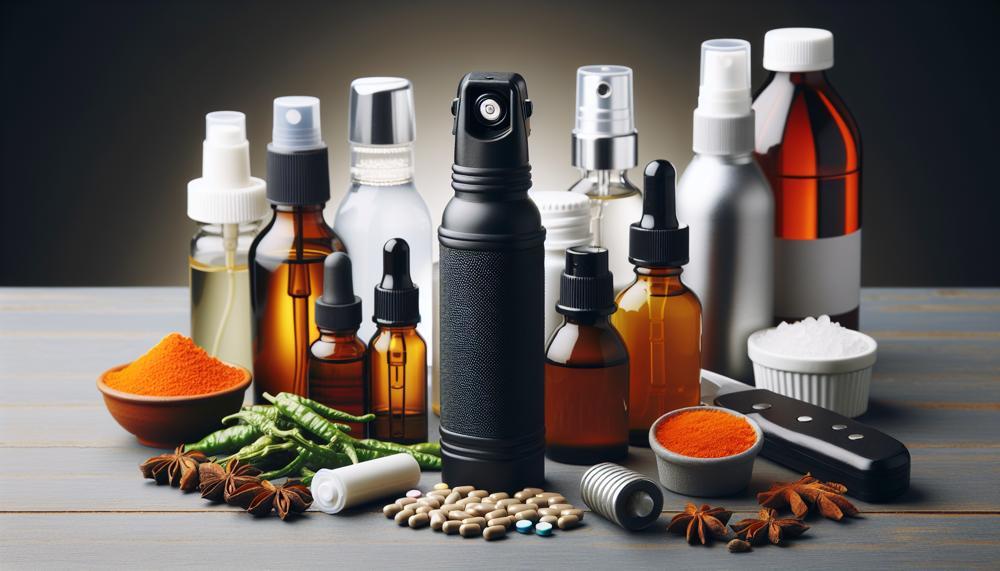
When venturing into bear country, it is crucial to take additional safety precautions and not solely rely on pepper spray as a form of protection against these powerful animals.
Despite its potential as a defense mechanism, many experts argue that pepper spray may not work effectively on bears due to their thick fur and tough skin. In fact, some studies have shown that bears can continue to attack even after being sprayed with pepper spray. This highlights the need for other safety measures when encountering bears in the wild.
In addition to carrying pepper spray, it is important for individuals to educate themselves on bear behavior and how to handle encounters with these animals. This includes making noise while hiking, properly storing food and garbage, and avoiding areas known to have high bear activity.
Furthermore, it is crucial to remember that bears are wild animals and should be treated with caution and respect. In some cases, simply backing away slowly and giving the bear space may be enough to avoid an attack. Pepper spray should be used as a last resort when all other safety measures have failed.
What are the Advantages of Pepper Spray for Self Defense?
The active ingredient in pepper spray, oleoresin capsicum (OC), causes a range of physiological responses in attackers, making it a popular and reliable choice for self defense.
Let’s delve deeper into the reasons why pepper spray is such an effective option.
Immediate Impact:
Upon contact with the attacker, pepper spray immediately causes severe pain and discomfort, rendering them unable to focus on their attack. The OC affects their respiratory system, causing coughing and difficulty breathing, as well as their vision, temporarily blinding them.
This swift impact provides the victim with a window of opportunity to escape or seek assistance.
Non-Lethal:
In contrast to other self defense methods like firearms, pepper spray is non-lethal and does not cause any lasting harm to the attacker.
This makes it a safer option for both the victim and the assailant.
User-Friendly:
Pepper spray is compact and easily accessible, fitting conveniently in a pocket or purse.
It requires no special training to use, making it a convenient choice for individuals of all ages and physical abilities.
Effective Against Multiple Attackers:
Designed to affect multiple attackers at once, pepper spray is an invaluable tool in situations where there are multiple assailants.
Universally Effective:
One of the most significant advantages of pepper spray is its effectiveness on most people, regardless of their size or strength.
This makes it a great equalizer for individuals who may not be physically capable of defending themselves against an attacker.
Affordable:
Compared to other self defense options like firearms or martial arts training, pepper spray is a budget-friendly choice.
Conclusion
In conclusion, while pepper spray may be the go-to option for self-defense, there are other alternatives available that can be just as effective in dangerous situations. From stun guns and personal alarms to tactical pens and keychain weapons, there is a wide range of options to choose from.
However, it’s crucial to understand the differences between bear spray and pepper spray and use them accordingly to avoid potential harm or legal consequences.
In addition, when venturing into bear country, it’s important to take extra safety precautions and not solely rely on pepper spray for protection.
Pepper spray offers immediate impact, non-lethal effects, user-friendliness, effectiveness against multiple attackers, universality, and affordability – making it a valuable tool for self-defense.
But it’s essential to remember that each situation is unique and requires careful consideration before deciding on the best self-defense method.
